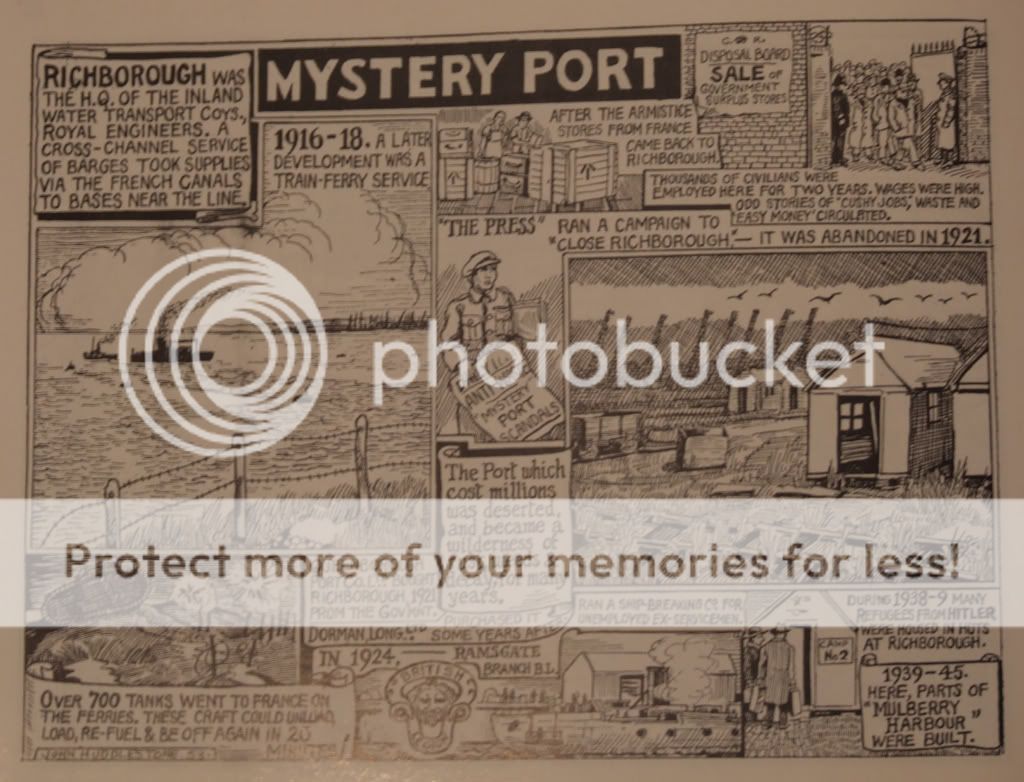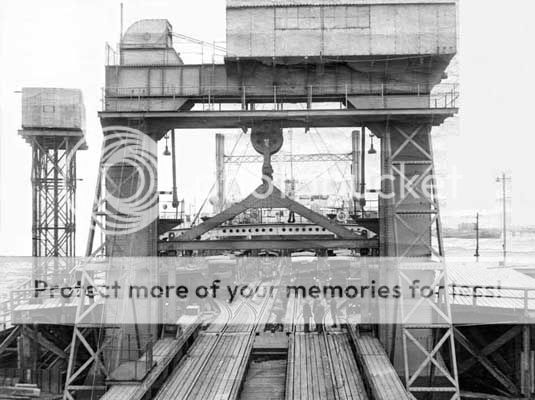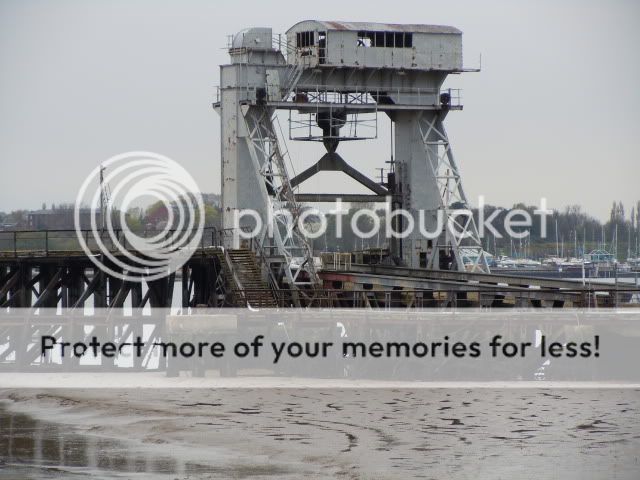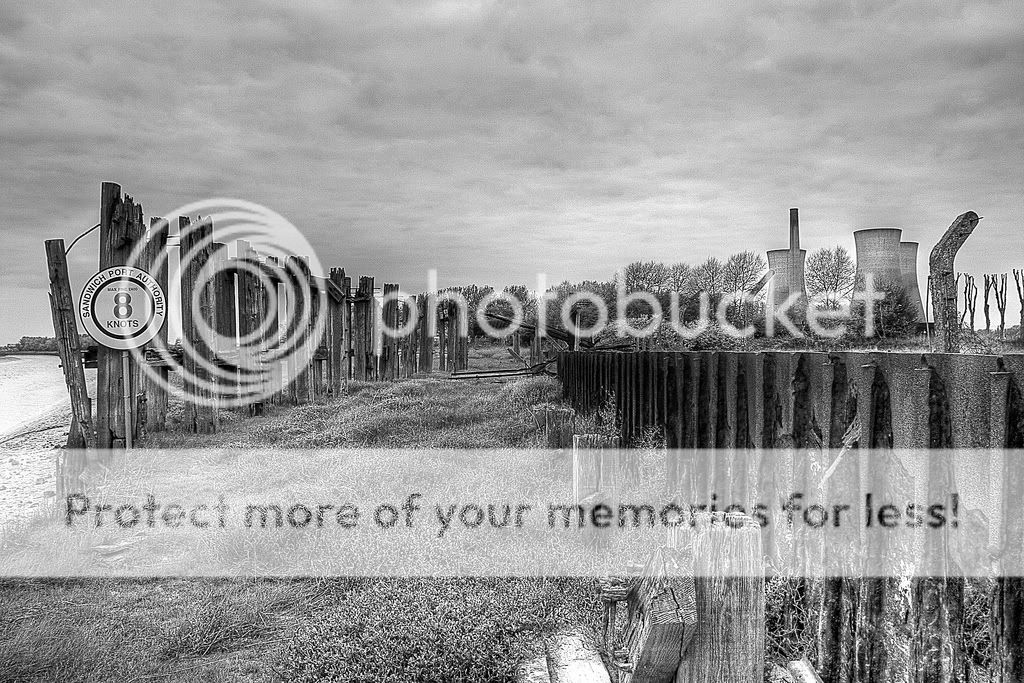During the First World War 1914/18 a secret port by the banks of the River Stour was the starting point of a ferry service for troops and munitions to France and Flanders. Camps were occupied by thousands of soldiers who were taken by day or by night across the North Sea and the Channel to Dunkirk and Calais

The Train Ferry

One of the greatest engineering features of Richborough Port was the train ferry this was a ferry barge with four sets of railway lines on its deck, enabling trains to be driven on at richborough and driven straight off when the barge reached France.

Normal sea going barges were also used on the route and such was the efficiency of the operation, a barge could be unloaded on its way back to pickup fresh stores in under 20 Minutes.
During the period of 1916 - 1918 richborough supplied the british forces fighting in France with the following
9,654 barges were unloaded
1,257,545 tons were exported
One of the Gantrys erected at Richborough shown in the photograph below.

Can be seen at Harwich. Now dissused it is a listed building, but I think its on the at Risk Register

After the end of the first world war Richborough soon fell into disuse and was abandoned by the military in 1921.
The Train ferry dock in the present day

For nearly twenty years the Richborough Camp was not used until the end of the year 1938, when Sandwich received Jewish and political refugees from from Germany, Austria and Czechoslovakia, driven out by Nazi persecution and saw over 5000 refugees pass through it..
In 1942 Richborough Camp became a post of the Marines, named H.M.S. Robertson: and the former Q port was again a hive of industry. Part of the Mulberry harbour to be towed to the Normandy coast, for "D Day" attack on the German wall, was built there by the Royal Engineers., The secret of the factory was well kept; high walls shut off the workshops from the roads, and buses travelling along that stretch of road were blacked out until "D" Day. when the cumbersome block of a breakwater was taken out to sea.